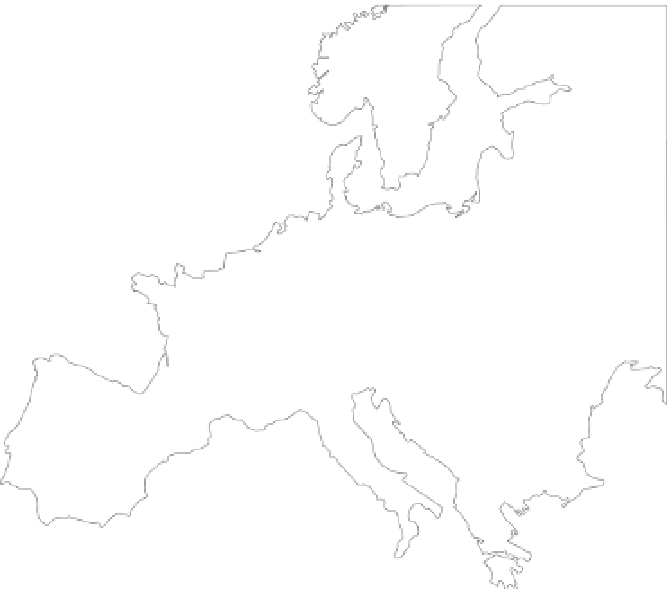Environmental Engineering Reference
In-Depth Information
Fagus sylvatica
recolonizing
500 km
Fig. 10.1
Beech (
Fagus sylvatica
)
recolonizing Europe after the
end of the ice age. Dot size
characterizes the time period
since the first record; figures
are in kilo-years before present
(ka BP). Spotted area: recent
distribution. Lines: nothern border
of distribution in 10,000
BC
(lower
line) and 5000
BC
(upper line).
Drawn from Lang (1994), with
the permission of the author.
>11
10
9
8
7
6
5
4
3
2
1
0
ka BP
other than beech-dominated forests are restricted to
very limited and rather extreme parts of the recent
site spectrum in central Europe. As a result we have
to realize that Europe as a potentially forested area is
a relatively recent phenomenon, and the same is true
for the main mosaic of forest types: (i) pine and spruce
forests in boreal northern Europe, (ii) deciduous forests
in temperate Europe (in western Europe mainly beech,
in eastern Europe mainly hornbeam and lime tree)
and (iii) evergreen sclerophyllous forests in southern
Europe.
This patch mosaic never had a chance to establish
undisturbed, because after the ice age humans also
started to settle in Europe. On the Mediterranean
islands (e.g. Mallorca, Malta) and in western Europe
the remains of the megalith culture show that dur-
ing the Neolithicum, about 5000 years ago, humans
already had relatively high technical standards, and
this implied the utilization of natural resources or land
consumption. Also in southern central Europe people
started to build permanent settlements during the
Neolithic age; they cut down the (oak) forest and
carried out agriculture (e.g. Iversen 1941, Bürger 1995,
Küster 1997). Forests were pushed back more and more,
and after small-scale devastations new sites for pion-
eer trees like birch and pine arose. Beginning at that
time, beech started to invade, but many places had
already been occupied by humans.
Up to the 19th century wood and timber were an
essential resource for the survival of humans and for
the economic development of the human societies in
Europe. Timber was used for the construction of
houses, bridges and ships. Fire wood (charcoal) was
needed for heating and cooking as well as for indus-
trial purposes in the beginning stage of industrializa-
tion (e.g. mining industry). Beyond that wood was used
for furniture, instruments, utensils, fences and so on;
oak bark delivered tanning agent (clothes, leather
industry). As a consequence the utilization pressure
on forests was extremely high; all these demands were
realized in an unregulated way without any care. Thus
the forest area decreased (in central Europe less than
20% remained), and the remaining forest stands be-
came more and more devastated.































































































































































































































































































































































































































